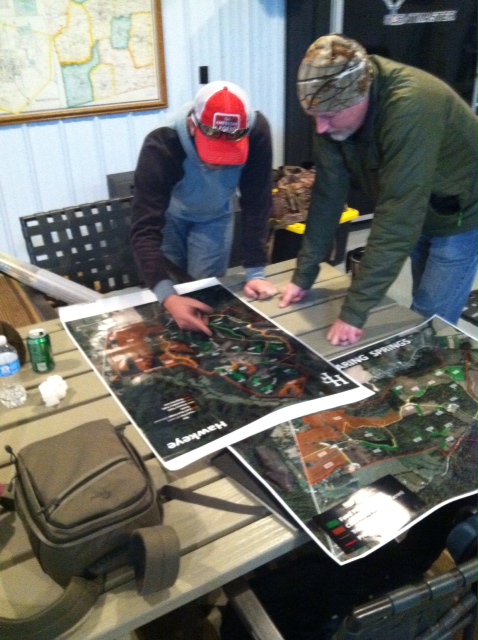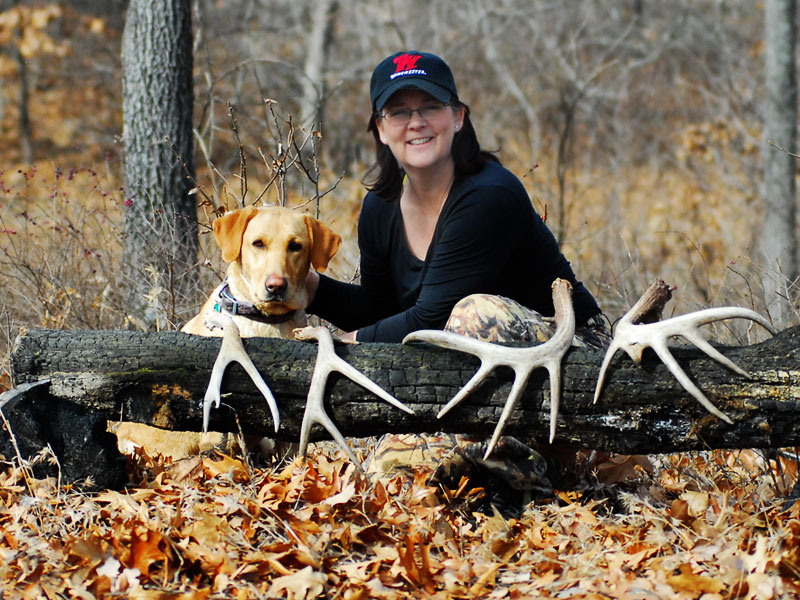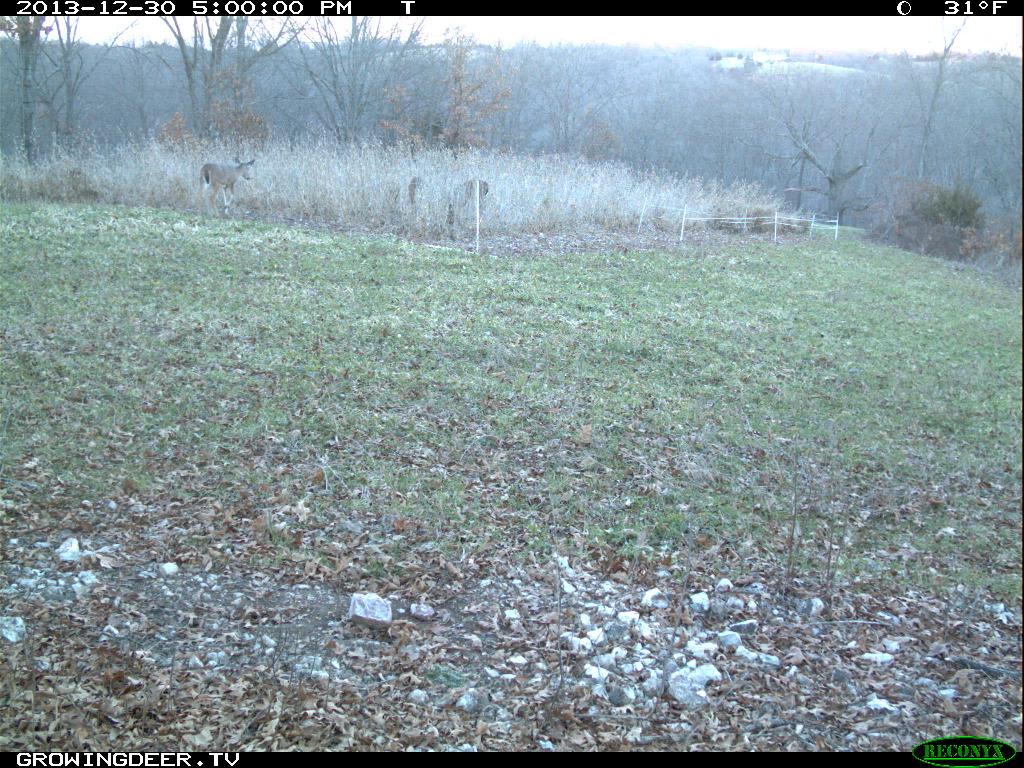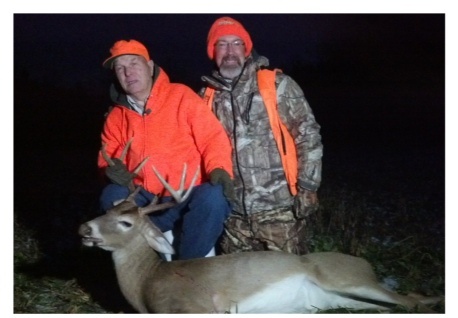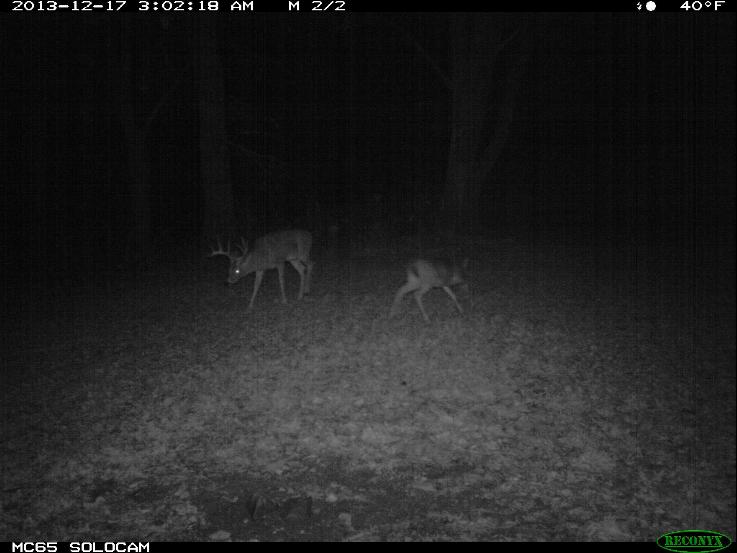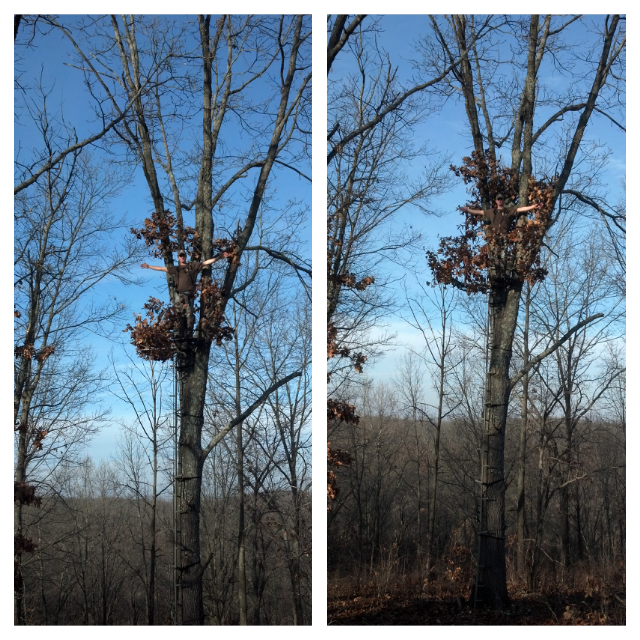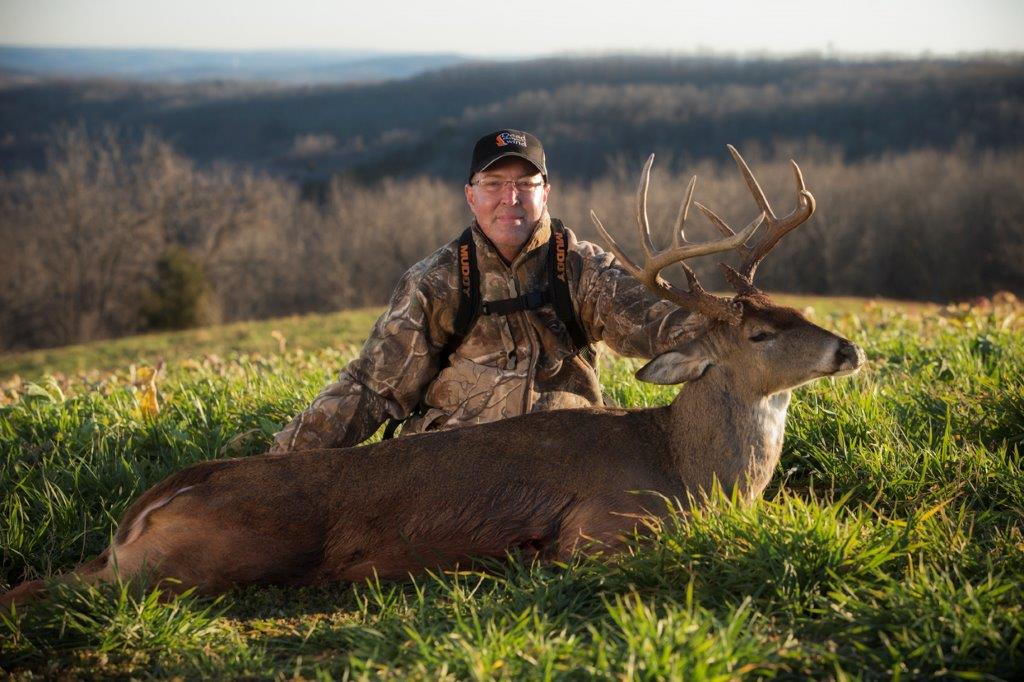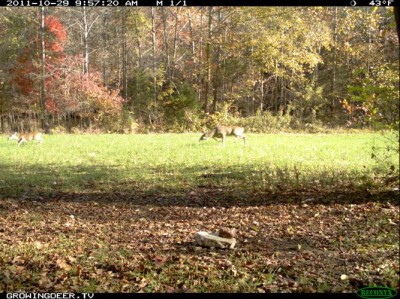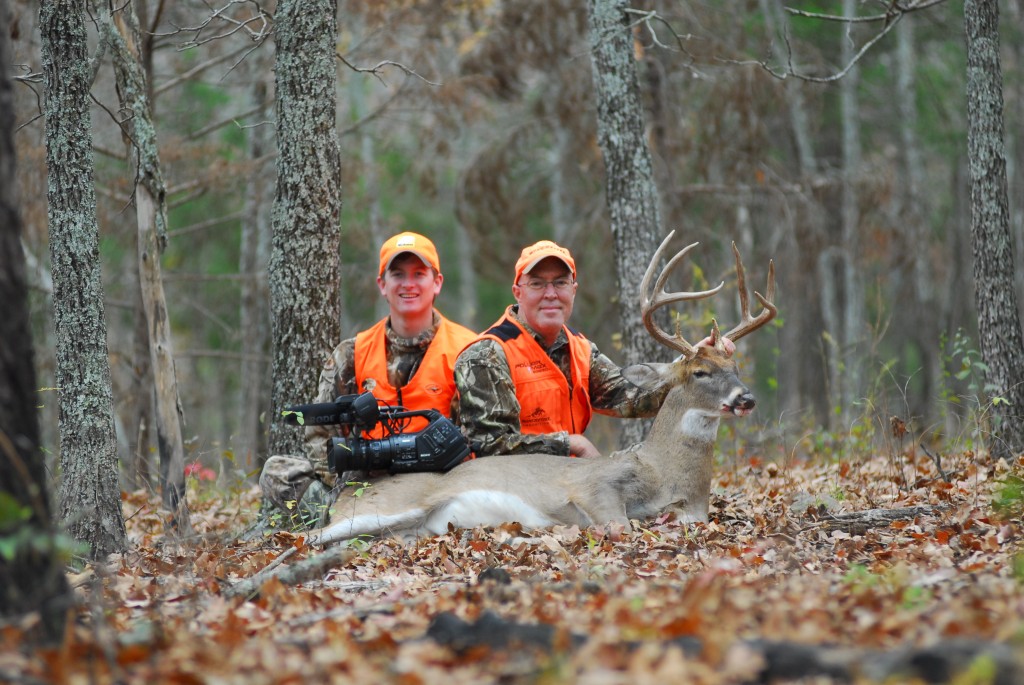Category: Hunting Blog
How And When To Plan For Next Hunting Season: It Begins Now!
January 15th is a bitter sweet day for me. Why? January 15th marks the last day of archery season here in Missouri. On one hand I’m extremely upset that the season is over. We started chasing deer in the beginning of September and now, the middle of January, is when we hang up our Prime bows for a rest. That’s where the “sweet” part comes into play. After all these months it is nice to step back and take a breather and rest, charge our batteries, and clear our heads.
After we clear our heads we then start putting in thoughts and ideas for the upcoming season. Yes, you heard me correct. It’s January 17th and we’re already thinking about next deer season! Great management plans aren’t drawn up and executed in a matter of a few months – that’s why we’re starting now. Obviously we’ve been doing management projects throughout the season but we’ve postponed the projects that will add more disturbance to the property. Now with this season complete it’s time to start back up!
Like most years we start by looking at our map. Where are our stands located? Where is the food located? Where are the bedding, bottlenecks, and water sources located? Finally, how can we hunt the property more successfully? One of our biggest projects for this year is dealing with the southern part of The Proving Grounds. This part hasn’t been as highly managed and has very few food sources and stand locations. Our plan is to provide both of those and bring it all to you in coming months, stay tuned to GrowingDeer.tv!
Other goals we are looking forward to completing are clover maintenance and additions, invasive species control, and prescribed fire.
First we’ll talk clover. We manage about 10% of our food plots in clover. Every year we’ll watch it progress or decline and study which areas need to be replanted and which plots are being used heavily and could possibly be hunted more regularly.
Invasive species control can bore most people, including myself, but it’s part of good management. Over the last couple of years we’ve tackled a huge infestation of honey locust trees but I’m happy to say we’ve knocked about 90% of the population out and we’re now searching the hillsides for any squatters that may still be surviving. This next year we’ll be shifting our focus to multi-floral rose bushes. They’ve begun to spread into the food plot edges so it’s important for us to eliminate the problem before they start to gain ground and compete with the food sources we’ve planted.
Lastly, one of our biggest and most time consuming projects, prescribed fires. We spend a lot of time working for fire, it all starts by making the fire line to finishing it with the lighting of the fire. This is a huge project but when it’s all said and done the benefits are huge! Be sure to check out our progress throughout the off season!
But – we’re not completely locked up inside! Cabin fever is real ya know! We’re going to be doing a little predator hunting to see if we can’t have a little fun and deal with the depression of deer season closing.
Daydreaming of whitetails,
Adam
Hunting Whitetails: Finish Strong
Here in Missouri we have a five more days left of bow season! It’s been cold and snowy so our hunting strategy will be to continue to focus on hunting food sources. There are still a few hit list bucks holding their head gear and we would love to pull back and let an arrow fly on one before the end of the season! These last days of bow season are also a great opportunity to harvest a few more does. We are always striving to balance our herd so taking a few more food plot munchers would be a blessing.
In many states deer season has closed and it’s time to transition into shed hunting. To some it may not be as exciting as tagging that buck you have been chasing but it’s still an opportunity to get your hands on some antlers and enjoy Creation!
We have viewed several Reconyx images of bucks that have dropped their antlers. Miss Tracy and her shed dog, Crystal, will be out searching the Ozark hills soon!
If your state has already closed for this deer season, I hope that it was a great year and good luck chasing sheds. If you are trying to make the most of the last few days of open season, then be sure to clearly identify your target. Don’t make the mistake of shooting a shed buck that you thought was a doe. That is never a good feeling!
Chasing whitetails together,
Brian
2013 Preparations For 2014 Results!
We have turned the page of 2013 and as we enter 2014 we’re still looking to have payoffs from last year’s work!
A lot of the loyal GrowingDeer.tv followers have watched the progress of our Non-Typical Hot Zone electric fence throughout the summer, fall, and now the beginning weeks of winter. The entire plan all began back in May when we started planting our food plots in Eagle Seed beans. We selected this plot we call “Lil Cave” back in the spring as being a great location to leave some grain for the late season. This particular food plot is located on a ridge top and is relatively small, especially compared to the large food plot less than 300 yards away. Because of the plot’s small size we used our Hot Zone fence to protect it throughout the growing season, and into the fall, and now winter. By allowing these Eagle Seed beans to grow without the heavy browse of wildlife, they reached shoulder height and are completely covered with bean pods.
Although The Proving Grounds was completely covered with acorns this year, we received an early snowfall which caused our deer to start using our food plots sooner than we expected. When the snow fell and deer became more and more active on the food plots we decided it was time to open a portion of the fence and allow the deer to feed on the beans. Like a lot of things dealing with wildlife, there’s a learning curve (from days to weeks) from opening the gap to when deer learn of it’s safety and value. While checking our Reconyx cameras last week we noticed the deer were really starting to enter the gap and consume the beans, even during daylight hours, GREAT NEWS!
Now with just a couple weeks of season left, we can’t wait to climb into the Muddy stands overlooking the Eagle Seed beans in hopes of harvesting a mature buck or even a couple of does! Be sure to check out upcoming episodes of GrowingDeer.tv to see how our plan works! Good luck to everyone as we roll into the New Year and may God bless you in your pursuit!
Daydreaming of whitetails,
Adam
Food Plot Benefits: Capitalizing On The Cold
During late August when the temperatures are soaring and sweat pours from your body, it is tough to be excited about the work required to plant food plots. It is strenuous work that seems lost for many months. However during December and January you may be rewarded for your work!
This week has been frigid in the Ozarks and the food plots that were planted in August have been great stand locations. It is alternative methods season in Missouri and we have been taking to Redneck Blinds that overlook large feeding plots with hopes of seeing smoke pour out of the black powder rifle!
Keying in on the fact that deer need to eat to stay warm, we had high hopes that a hit list buck would come to chow down on the Eagle Seed food plots. The first sit this week we were not disappointed. Just before dark a hit list buck we call Two Face appeared in the bushes at the edge of the field. Sadly, he out-smarted us and never left cover to present a kill shot. The very next night Grant’s dad, Glen Woods, joined us for an afternoon hunt. Once again, the bucks hit the food plot just before dark. This time the deer hung around a little too long and Glen Woods dropped a buck where he stood!
We will continue to hunt evening food sources after Christmas and we hope you are blessed with the opportunity to do the same! Good hunting and may everyone be blessed with a prosperous and happy New Year!
Chasing Whitetails together,
Brian
Planning For Muzzleloader Season
For many whitetail hunters we’ve reached the late season post rut phase and it’s time to switch gears! We’ve been hunting trails, bottlenecks, and food plots lately but as we set aside our Prime bows and pick up our muzzleloaders for the opening of primitive season Saturday we’ll take a little time to talk about our strategy.
As you’ve heard me talk about recently the second rut is generally sometime during December here at The Proving Grounds. It’s caused by female fawns reaching approximately 60 or 70 pounds which triggers puberty and makes them receptive, and as every deer hunter knows, a hot doe is the number one attraction for a whitetail buck. The greatest thing about the second rut is unlike a mature doe who seeks cover when she becomes receptive, doe fawns go about their normal schedule. They are still going from cover to food, regardless if they are receptive or not.
Checking our Reconyx cameras recently I’ve noticed several bucks nudging doe fawns around food plots, even a couple hit list bucks! This makes them very prone to following hot doe fawns into a food plot during daylight hours! Even better!
Another great advantage of late season hunting over early season is frost. This time of year here at The Proving Grounds we usually receive a frost every morning, and this frost can be extremely heavy at times! During the cold weather months deer obviously are very concerned with staying warm, and like you and I when we’re trying to stay warm we don’t typically eat ice cream or any other frozen food! Putting this in hunters terms, deer don’t usually feed while there is a heavy frost on; they can be seen feeding mid morning (like the doe fawn we caught Trashman chasing last year) or they’ll feed more heavily in the afternoons.
Late season is one of my favorite times to hunt whitetails! You can usually be more successful hunting in the afternoons than mornings, and if you find a lot of doe fawns using the area, hang tight because a hit list buck will most likely make an appearance there.
Saturday afternoon, weather permitting, Grant and I will take to the field in hopes of finding that hot doe fawn with a hit list buck not far behind! Good luck to everyone headed out and be safe!
Daydreaming of whitetails,
Adam
New Hunting Strategies For The Late Season
If you are like us here at GrowingDeer.tv we have entered late season hunting with a buck tag still in our pocket. As any hunter knows that buck tag will burn a hole straight through your favorite pair of pants. Luckily, late season hunting is a great time to punch that tag! What can you do to ensure that buck tag is filled before seasons end?
The rut ends at the end of November here in the Ozark Mountains so we shift our focus to hunting food sources on ridge tops where we get steady winds. A problem we face with hunting ridge tops during late season is a lack of cover.
By this time of year most of the leaves have fallen from the trees leaving our Muddy treestands bare and leaving us vulnerable to being skylined. To solve this problem, Adam and I cut small oak saplings that hold their leaves late into the year, and used them to create cover around the stand. Cedar branches are a viable option as well. With just a hand saw and a few zip ties our favorite stand locations are ready for late season hunting.
Doe fawns are a buck hunter’s best friend this time of year. If quality food sources have allowed this year’s doe fawns to reach 70 pounds they will become receptive. This is what people refer to as the second rut. Mature does that are receptive hide from bucks, but doe fawns generally don’t change their pattern. They go from the cover to the food and back to the cover again, hopefully with a mature buck right behind!
The GrowingDeer Team will be hunting food sources heavily this week, hoping for a receptive doe fawn to bring the big boy right into our kill zone! Good luck and stay warm!
Chasing Whitetails together,
Brian
Hunting Strategies: How To Capitalize On the Storm
Post rut hunting can be very productive. Similar to the pre rut, it comes down to predicting when the deer are going to move and being in your stand when they do.
There is a large cold front pushing through the Midwest. Ice is accumulating as I write this. These conditions have our eyes lit up here at GrowingDeer.tv!
Some might say we are crazy for wanting to hunt the storm and its blustery conditions. If a hunter can chum up enough intestinal fortitude to get out and tough the weather immediately before and directly following a large winter storm, you might just find yourself gripping a big buck’s antlers.
Deer frequently have increased daytime deer activity just before and after abnormal weather. Many times before a large winter front I have observed deer moving to food in an almost frantic fashion. As a hunter, I would hate to miss that! Once the storm hits I usually stay in the warmth of my house as the deer are likely doing the same – seeking cover. Keep a watchful eye and when the first calm hours after the storm comes, head back to the woods and capitalize on the deer getting on their feet and moving to food.
A winter storm can be a great tool to use for bagging your next hit list buck. Remember to hunt on either end of the storm. That’s what the GrowingDeer Team will be doing this week, and just maybe we can have a repeat of last year’s late season harvest of a hit list buck we called “Trashman” (watch GDTV 163 here). Good hunting and stay warm!
Chasing Whitetails together,
Brian
New Whitetail Strategies For Post-Gun Season
We’ve made our way through Missouri rifle season and are closing out the month of November. We’re putting up our Winchester boxes and grabbing our Prime bows and heading back to the field in hopes of finding that hit list buck! It’s time now to draw up a game plan for the late season or “post gun season.”
Weekly readers of our blog recall Brian writing about our hunting strategies for the last few days of rifle season. During those final days of rifle season, we saw more and more does with fawns and even some large groups of does and fawns. Along with observing their movement patterns and preparing our game plan for our upcoming hunts we’ll focus on one thing, food plots. As Brian mentioned, the does and fawns will be going to the plots to feed while the bucks will be following hoping to find a hot doe. Chances are most of the does will already be bred but there is one variable that’s still in play: the “second rut.” This is the time frame when doe fawns have reached approximately 70 pounds and enter puberty making them receptive for breeding.
Determining the time frame when this occurs depends heavily on the food sources available. A doe fawn that lives in agriculture country where there are plenty of crops to eat will come into estrus sooner than would a doe fawn in heavily populated forests. In our area typically the “second rut” will occur around the middle to late December. However, based on the size of some of the fawns on The Proving Grounds this year it looks like it could be really soon!
That one reason alone is exactly why we’ll be monitoring our Reconyx cameras over the next few weeks and finding those food plots with the most activity. First we’ll look to find the does and fawns frequently visiting the food plot and then we’ll wait for a hit list buck to show his face. This is exactly what Grant and I did last December when we had our encounter with Trashman (watch episode 163 here).
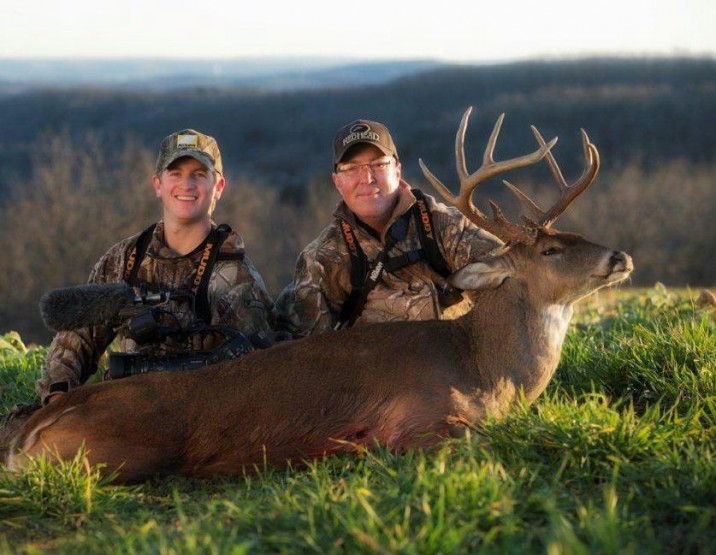
After we identify the food plot does and fawns are frequently visiting we will wait for a hit list buck to show his face.
That’s our game plan! Be sure to check out upcoming episodes of GrowingDeer.tv to see if it all comes together!
Daydreaming of whitetails,
Adam
How We’ll Be Hunting The Last Days Of The Rut
Rifle season has been open in Missouri for six days and we have been hunting hard. It appeared from hunts early during the week that most bucks were tending does and not moving much. Hence hunting thick cover was the best option. However, there are a few things that indicate deer movement will be picking up over the final days of rifle season.
Our observations lead us to believe that does are leaving bucks and pairing back up with their fawns. This means that the majority of does have now been tended by bucks, the bucks will be on the move looking for those last few does that have yet to become receptive.
The whitetail gestation period is 200 days long. This means all does that conceived during the first two weeks of November, the heaviest part of the rut, will have their fawns in middle to late May. Every year there are some newborn fawns that we see as late as the second week of June. Back dating 200 days from when we observed those mid-June fawns confirms that some does are bred through the last week of November. There’s still time to use rut hunting strategies. In fact, bucks will likely be moving more during the next week or two as fewer does will be receptive and there will be more competition for those does.
The last few does that become receptive will have several bucks after them so we suggest forming your hunting strategies this week around where the does will be. There is a large cold front pushing into the Midwest so they will be hitting the food sources in the evenings. The GrowingDeer.tv Team will be hunting a combination of cover in the mornings, and Eagle Seed Broadside food plots in the afternoons in hopes those last few receptive does pass through with a hit list buck not far behind.
Chasing Whitetails together,
Brian
All Signals Go: Time To Hunt The Rut!
It’s that time of year again, the season that every whitetail hunter has laid in bed and dreamed about for the last twelve months. It’s the rut! Hunters wait all year for this magic time of chasing whitetails, but how do we confirm it’s really here?
I spent the day yesterday checking Reconyx trail cameras in preparation for hunting the rifle season this weekend. While out I made a few key observations about the stage of the rut.
I noticed that not a single scrape that we have been monitoring showed any signs of recent use. Falling leaves had covered them. This indicated that the majority of the does are now receptive and bucks no longer need to check scrapes to determine the status of deer in the area. Receptive does are emitting enough scent that the bucks know the status of does and spend their time seeking and tending receptive does versus checking scrapes.
Secondly, I observed three different sets of fawns without a mature doe nearby. When does begin to be harassed by bucks they often leave their fawns for 24-48 hours and seek thick cover in hopes of avoiding aggressive bucks.
These and more signs all indicate it’s currently the lockdown phase of the rut in the Ozark Mountains. If that’s the case where you hunt, I suggest finding some thick cover in hopes of catching that big buck searching for a receptive doe. That’s where the GrowingDeer.tv Team will be hunting! Hopefully things turn out like the rifle opener two years ago (watch GDTV #104 here) when Grant and Adam had success out of a Redneck Blind using this strategy.
Chasing Whitetails Together,
Brian



